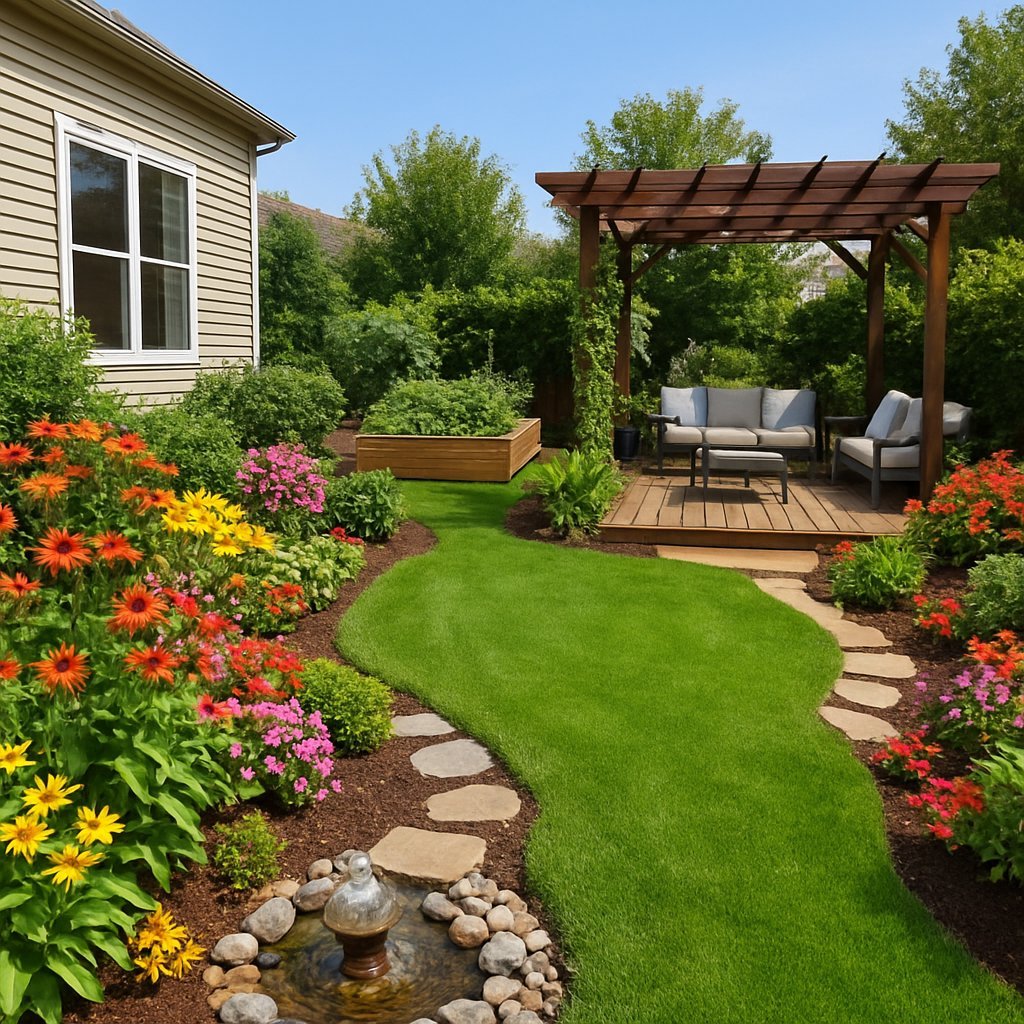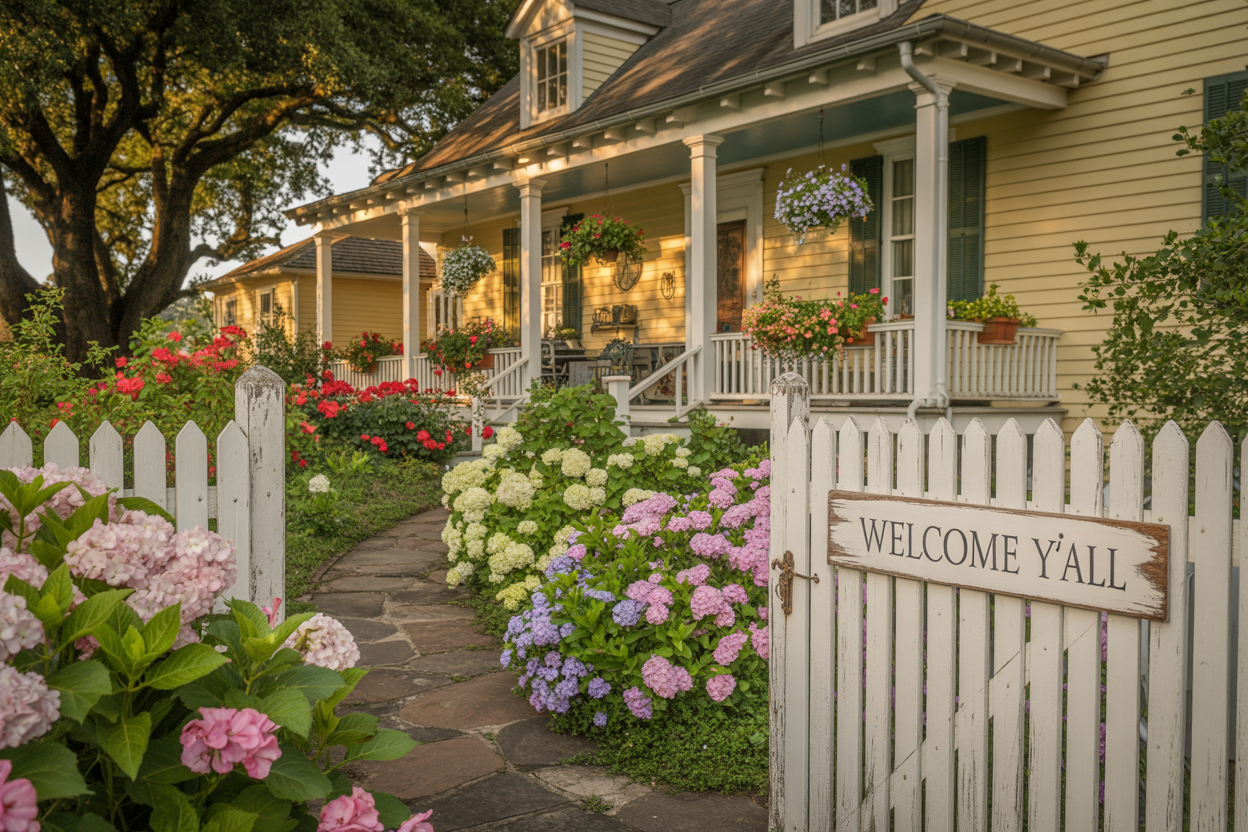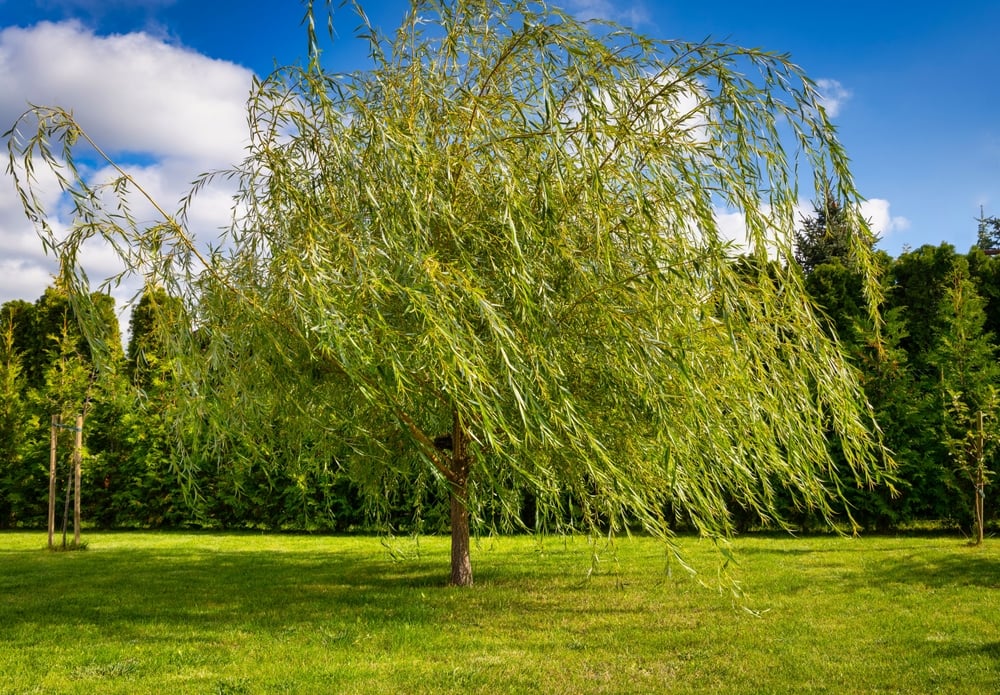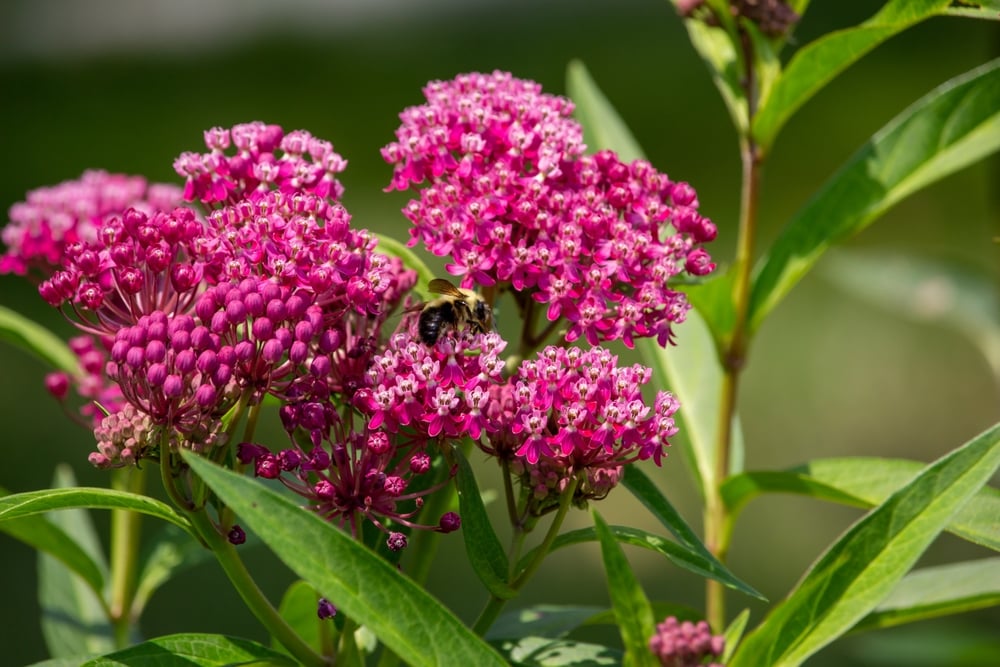
If you’re looking to add color and charm to your garden or simply want to learn about the beautiful flowers that thrive in Florida, you’re in the right place. Florida’s climate offers unique challenges, but it also supports a rich variety of flowers that can brighten any space.
This article will help you discover 30 of the prettiest flowers that grow well in Florida’s warm and sometimes humid environment. Whether you’re gardening for the first time or looking to refresh your landscape, these flowers are both attractive and suited to the local conditions.
Please note that this article is enhanced with the use of AI generated flower images.
1. Lantana

Lantana is a colorful flower that you’ll often see blooming year-round in Florida gardens. Its clusters of small blooms come in many shades like pink, yellow, red, lavender, and creamy white. You might notice multiple colors mixed in a single flower cluster, adding to its charm.
This plant is easy to grow and low-maintenance. It thrives in full sun and tolerates heat, drought, and even salty conditions, making it a great choice for your garden in the Florida climate.
Lantana attracts butterflies and bees, so it can bring life and movement to your outdoor space. You can choose from different types, like trailing lantana with a spread of up to 4 feet, or mounding lantana that grows taller and more compact.
Whether you want a splash of color on your balcony or a bright addition to your garden, lantana can fit in nicely and bloom almost all year long.
2. Firebush

Firebush is a bright and cheerful native shrub that you’ll find blooming most of the year in Florida. Its orange-red tubular flowers are especially attractive to hummingbirds and butterflies, making your garden lively and full of movement.
You can plant Firebush in full sun for the best flower display, but it also does well in partial shade. It grows quickly and can reach up to 15 feet tall, providing both color and structure to your landscape.
This plant is quite tough once established. It tolerates drought and occasional wet soil, though it may die back in freezes but will regrow from the roots. Its evergreen leaves stay attractive whether it’s flowering or not.
You’ll notice the berries change from yellow to orange, red, and finally black, adding extra interest through late summer and winter. Firebush is a great choice if you want a low-maintenance, wildlife-friendly plant for your Florida garden.
3. Coontie
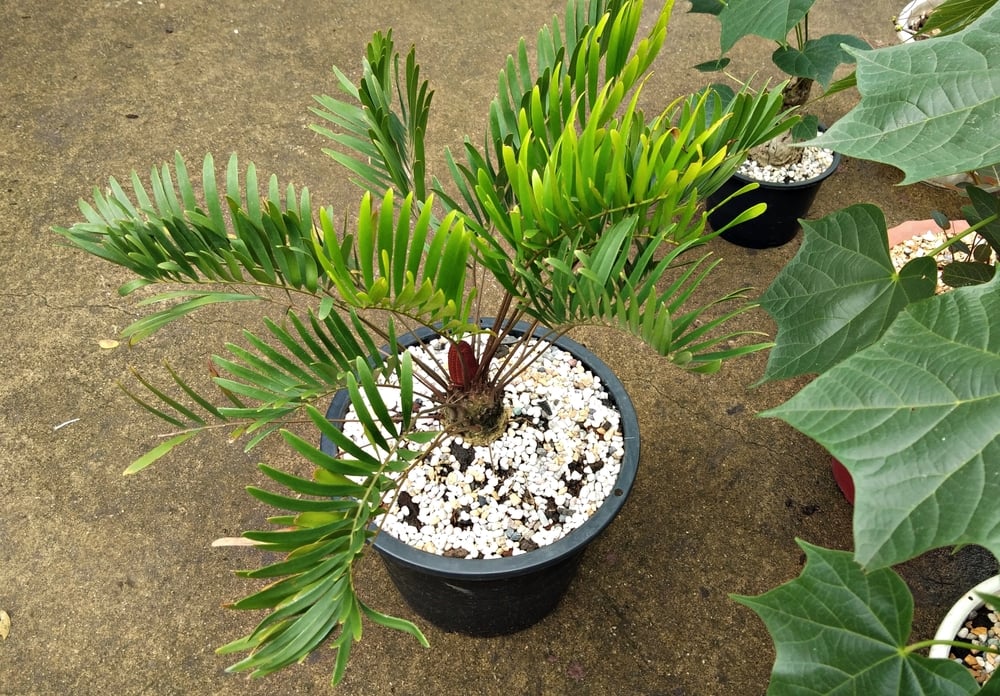
If you’re looking for a low-maintenance plant with unique charm, coontie is a great choice. This native Florida plant has glossy, fernlike leaves and typically grows between one and four feet tall. It adds a lush, green texture to your garden without requiring much care.
Coontie is very hardy and can handle cold temperatures down to 30°F. It grows well in both sun and shade, making it versatile for different spots in your yard. Plus, it tolerates dry conditions and a wide range of soil types.
This plant is important ecologically as the host for rare Atala butterfly larvae. While coontie produces bright orange seeds, these are toxic if eaten by people or pets. Birds and small mammals, however, do find them a good food source.
Coontie has a slow growth rate, so it’s perfect if you want a steady, green presence rather than a fast-growing shrub. It’s often used as ground cover and fits naturally into Florida’s landscape. You’ll appreciate its ancient origins and its role in Florida’s natural heritage.
4. Muhly Grass

Muhly grass is a beautiful and low-maintenance plant you can easily grow in Florida. It produces stunning pink and purple plumes in the fall that create a soft, cloud-like effect in your garden.
You’ll find that its slender, dark green foliage stays attractive throughout the year. It works well when planted in groups, especially spaced about 24 to 36 inches apart for the best visual impact.
This grass is drought-tolerant and handles Florida’s climate with ease. It prefers full sun to light shade and adapts well to average soil conditions. Muhly grass also adds texture and color, making it great near birdbaths, palm trees, or as a colorful border.
You’ll enjoy how it blooms with airy pink flowers in autumn, brightening up your outdoor space without much effort on your part. If you want a versatile plant that combines beauty and resilience, muhly grass is a solid choice for your Florida garden.
5. Saw Palmetto

Saw palmetto is a small, evergreen palm native to Florida and the southeastern U.S. It has fan-shaped leaves that create a dense, attractive ground cover. You’ll often find it growing in pine flatwoods and coastal areas.
The plant produces clusters of small white flowers in spring. These are followed by blue-black fruit that lasts from summer into fall. The fruit is a key food source for wildlife.
Saw palmetto is tough to transplant but easy to grow from containers. It prefers full sun but can tolerate shade and salty, sandy soils. Once established, it is very drought tolerant.
You can use saw palmetto as a privacy hedge or a natural backdrop in your garden. Just place it away from walkways since the leaves have saw-like edges. It’s a great way to add native charm and support local ecosystems.
6. Beautyberry

If you want a colorful shrub that adds charm to your garden, beautyberry is a great choice. It’s native to Florida and produces bright purple berries in the fall that many birds love. You’ll enjoy the striking clusters that stand out in your landscape.
Beautyberry plants typically grow between 3 to 8 feet tall and wide, with arching branches that create a graceful shape. You can use them as borders or focal points. Their lavender-pink flowers appear in spring and early summer, giving your garden color before the berries show up.
This shrub is easy to care for and adapts well to different conditions. It grows best in full sun but tolerates some shade. The berries are edible, though usually enjoyed more by wildlife than people. With minimal maintenance, beautyberry adds natural beauty and supports local ecosystems.
7. Cardinal Flower

The Cardinal Flower is a striking wildflower you’ll find blooming in Florida, especially from the Panhandle to Central Florida. Its bright red tubular flowers stand tall on slender green stems, making it an eye-catching addition to your garden.
It blooms from summer through early fall, offering a long-lasting splash of color. You’ll likely see hummingbirds and butterflies visiting its nectar-rich blossoms.
This plant grows well in sun, part sun, or shade, and naturally appears near rivers, swamps, and floodplain forests. In some parts of Florida, it’s considered threatened, so planting it helps support local ecosystems.
Cardinal Flower is a perennial, so it dies back in winter but returns each year. It’s a friendly choice if you want to add native beauty and attract pollinators to your space.
8. Swamp Milkweed

Swamp Milkweed (Asclepias incarnata) is a lovely choice if you want to attract butterflies to your garden. It produces clusters of small, pink to mauve flowers that bloom during the summer. The flowers add a soft, pleasant splash of color to moist areas.
This plant thrives in wet soils, making it perfect near ponds, downspouts, or low spots in your yard. It can grow up to five feet tall, so give it enough space to spread. Swamp Milkweed also tolerates some drought once it is established.
You’ll notice it’s a magnet for many butterfly species and native pollinators, including monarchs. While caterpillars feeding on it might make it look a little worn, that’s a good sign your garden is supporting wildlife.
Growing Swamp Milkweed can be quite rewarding as it fits well in mixed butterfly or wildflower gardens. It prefers sun to part shade, so consider its location carefully to keep it happy and healthy.
9. Turtlehead

Turtlehead is a charming native wildflower you can grow in Florida gardens. Its flowers look like little turtle heads, which makes it quite unique and fun to observe.
You’ll find turtlehead plants reaching 2 to 3 feet tall. They prefer moist soil and do well in areas with partial to full sun. This makes them great for spots that might stay a bit damp.
The dark green leaves add nice contrast when paired with other plants. Turtlehead blooms in late summer to fall, giving your garden color when many other flowers start to fade.
Growing turtlehead can be rewarding if you provide consistent moisture. It’s a low-maintenance option that attracts pollinators and fits well in naturalized garden areas or woodland settings.
10. Passionflower

If you want to add a vibrant and unique touch to your Florida garden, passionflowers are a great choice. These tropical vines grow well in Florida’s climate and are known for their intricate and colorful blooms.
Most passionflowers are vines, so you can use them to cover fences, pergolas, or even small yards with vertical space. Some types produce edible fruit, adding an extra bonus to their beauty.
You’ll also enjoy watching butterflies attracted to the flowers, especially the Gulf Fritillary caterpillars, which use passionflower vines as their host plants. Passionflowers come in many varieties, so you can find one that fits your garden’s size and style.
With regular feeding during the growing season, these plants grow fast and bloom generously. They’re relatively easy to care for and can become a striking part of your outdoor space.
11. Ginger

Ginger plants bring a tropical feel to your Florida garden with their lush foliage and stunning flowers. You can find many varieties, from tall, fiery torch gingers to smaller plants with delicate blooms.
These plants prefer rich, moist soil and filtered sunlight. Regular watering and occasional feeding will keep them healthy and vibrant in Florida’s warm, humid climate.
Ginger is easy to grow if you start with healthy rhizomes. You can plant them in shaded spots or partial sun areas, making ginger versatile in your landscape.
Beyond their beauty, some ginger types produce edible rhizomes used in cooking and medicine. However, many ornamental gingers are grown mainly for their colorful flowers and striking leaves.
If you enjoy cut flowers, ginger blooms last long and can brighten up your indoor spaces. Adding ginger to your garden gives you a touch of the tropics right at home.
12. Bromeliad

Bromeliads bring bright color and unique shapes to your Florida garden. You can find them in a variety of sizes, from small tabletop plants to large, eye-catching specimens. Their leaves come in vivid patterns like stripes and spots, adding interest even when they aren’t flowering.
These tropical plants thrive in Florida’s warm, humid climate. You’ll want to give them morning sun and plenty of moisture, but avoid overwatering. Bromeliads naturally collect water in their central cups, which helps them stay hydrated.
They’re easy to grow both indoors and outdoors. You can mount some varieties on trees or place them in pots. With minimal care, bromeliads can brighten your space for months with their colorful foliage and exotic flowers.
If you enjoy plants that stand out with bold looks, bromeliads are a great choice. Their variety lets you pick the perfect one to suit your style and garden setup.
13. Blue Daze

Blue Daze is a charming plant that thrives in Florida’s sunny and warm climate. You’ll enjoy its bright blue flowers, which bloom from spring through fall and sometimes even year-round in milder areas.
This plant is drought-tolerant and does well in sandy, well-draining soil. It’s a great choice if you want a low-maintenance option that still adds color to your garden or patio.
Blue Daze grows as a perennial in central and south Florida, but in cooler areas, you might treat it as an annual. It spreads about 12 to 18 inches wide, making it a lovely ground cover.
The small green leaves create a soft backdrop, letting the blue flowers stand out. If you give it full sun and moderate watering, your Blue Daze will stay healthy and keep blooming beautifully.
14. Gaillardia

Gaillardia, also known as Blanketflower, is a bright and cheerful addition to any Florida garden. You’ll enjoy its vibrant red and gold blooms that appear from spring through fall.
This flower thrives in full sun and well-drained soil. It’s drought-tolerant, making it a low-maintenance choice for Florida’s hot weather.
You can plant Gaillardia in spring or early fall to give it time to establish before extreme temperatures arrive. It attracts butterflies and other pollinators, adding life to your outdoor space.
If you’re in South Florida, you might see Gaillardia blooming year-round. It’s a hardy plant that reseeds easily, so you can expect color season after season.
15. Blanket Flower

If you’re looking for a bright and cheerful addition to your garden, the Blanket Flower is a great choice. This flower, also known as Gaillardia, shows off daisy-like blooms in red, yellow, and orange shades. Its colorful petals bring warmth to any space.
Blanket Flowers do well in Florida’s sunny climate. You’ll find them thriving in dry, open areas like savannahs and coastal dunes. They bloom from spring through fall in North Florida and year-round further south.
These flowers are low-maintenance and tolerate heat and drought, making them perfect if you prefer plants that don’t need much fuss. Just plant them in a sunny spot with well-draining soil, and they’ll reward you with vibrant blooms.
They grow in mounds of foliage, usually reaching about 12 to 22 inches tall. The Blanket Flower’s bright colors attract pollinators, which can help other plants in your garden too.
Adding Blanket Flowers to your Florida garden gives you long-lasting color and a touch of wild beauty. They are a friendly, easy-going flower anyone can enjoy growing.
16. Coreopsis

You’ll recognize coreopsis by its bright, cheerful blooms that often look like little suns. These flowers come in shades of yellow, pink, orange, and red, adding a lovely splash of color to your garden.
Coreopsis is also called tickseed because its seeds look like tiny ticks. This plant thrives in sunny spots and well-draining soil, making it easy to care for in Florida’s climate.
You can grow coreopsis as either an annual or a short-lived perennial. It often reseeds itself, so you can enjoy continuous blooms without much effort.
This flower attracts pollinators like bees and butterflies, so it’s great for supporting local wildlife. Plus, it tolerates occasional wet conditions, giving you some flexibility in where you plant it.
17. African Daisy

African Daisies, or Osteospermum, are bright and cheerful flowers native to South Africa. You’ll find them in a variety of colors like purple, pink, orange, white, and even yellow. Their daisy-like blooms add a fresh splash of color to your garden.
These flowers prefer cooler weather and do well in places like Florida during the milder seasons. If you live in a hotter area, consider growing them in containers so you can move them as needed to protect from extreme heat.
African Daisies need full sun and well-drained soil to thrive. They can be annuals or perennials depending on your zone and care. Their colorful petals open wide in sunlight and close at night, giving your garden a dynamic, lively look.
Caring for them is pretty simple. Just water when the soil feels dry but avoid overwatering. Adding compost or rich soil helps keep them healthy and encourages more blooms. You’ll enjoy their bright colors and easy growth in your outdoor space.
18. Plumbago

Plumbago is a lovely flowering shrub that adds soft blue color to your Florida garden. You’ll often find it blooming most of the year, especially in zones 9-11 where it thrives in warm climates. The gentle blue flowers look great with silvery or pink foliage nearby.
This plant is very easy to care for. It’s drought-tolerant once mature and generally resists deer and common plant diseases. If you live in cooler Florida areas, you might want to bring it indoors or grow it in a container during the coldest months.
There are two common types you might encounter: Plumbago auriculata, known for its sprawling shape, and the native Plumbago scandens, which prefers coastal environments. Both bring charm to your outdoor space with their delicate, phlox-like flowers.
You’ll find plumbago works well as a foundation plant, in borders, or even in planters. It’s a great choice if you want to add a bit of year-round, low-maintenance color to your garden.
19. Spiderwort

If you want a flower that blooms beautifully in your Florida garden, spiderwort is a great pick. This perennial plant features slender, grass-like leaves and clusters of blue-purple flowers about an inch wide.
Spiderwort blooms mostly in spring but can also flower sporadically throughout the year. You’ll notice it grows well in moist areas but can adapt to drier spots too.
This plant grows in clumps and reaches about two feet tall. It thrives in both full sun and partial shade, making it flexible for various garden spots.
Spiderwort is native to Florida and many parts of the eastern U.S., so it fits naturally into your landscape. It also attracts native bees, helping support local pollinators.
Adding spiderwort to your yard introduces a touch of wild beauty that’s easy to care for and keeps blooming now and then all year long.
20. Salvia

Salvia is a wonderful choice for your Florida garden. With many species to pick from, you can find varieties that bloom in colors like red, pink, purple, and blue. These flowers thrive in full sun but can also tolerate some shade.
You’ll appreciate how easy Salvias are to grow. They adapt well to different soil types, from sandy to more compact soils. Plus, many Salvias attract hummingbirds and other pollinators, adding life to your garden.
Some popular options include Salvia leucantha, known as Mexican Sage, which offers lovely purple flowers. There’s also Salvia coccinea, the scarlet sage, which can come in red, white, or pink.
Salvias often have aromatic foliage. You can rub the leaves to enjoy their scent, a feature that adds sensory interest to your outdoor space. Overall, Salvia is a colorful, low-maintenance plant that fits well in many Florida landscapes.
21. Dune Sunflower

If you love coastal plants, the Dune Sunflower is a great choice for your garden. It naturally grows along Florida’s sandy beaches and dunes, adding bright yellow blooms to the landscape. Its flowers attract butterflies, bees, and birds, making your garden a lively place.
This sunflower is a spreading perennial that can handle tough conditions like wind, salt spray, and sandy soil. You’ll find it blooming year-round in frost-free areas, while in colder spots it dies back but re-sprouts from its roots in spring.
Dune Sunflower also works well as a ground cover. It grows fast and spreads wide, creating a cheerful carpet of green and yellow. You can even use it near your home to help lower surface temperatures.
With its natural beauty and easy care, the Dune Sunflower is a lovely addition to any Florida-friendly garden.
22. Scarlet Sage

If you want a splash of bright red in your garden, Scarlet Sage is a great choice. Its vibrant tubular flowers grow in spikes above leafy foliage, making it a real standout. You’ll find it thriving in warm areas like Central and Southern Florida.
This plant attracts lots of pollinators. Bees, butterflies, and hummingbirds especially love its nectar. Watching them visit your garden can be a delightful experience.
Scarlet Sage is quite adaptable. It blooms for a long time and tolerates heavy pruning, which helps encourage fresh growth. You can easily keep it healthy with regular trimming.
You’ll appreciate how low-maintenance it is, fitting well in butterfly and wildflower gardens. Whether you’re new to gardening or experienced, this plant offers easy beauty and helps support local wildlife.
23. Firecracker Plant

The Firecracker Plant is a great addition if you want bright, showy flowers in your Florida garden. It has delicate, narrow leaves and produces vibrant red tubular flowers that look like little fountains.
You’ll find this plant blooms nearly all year when placed in full sun. It attracts hummingbirds and butterflies, adding life and movement to your outdoor space.
If you want a bit of variety, look for the yellow cultivar called ‘Aureus.’ It has the same shape and size but with pale yellow flowers instead of red.
This plant prefers well-draining soil and regular watering. Keep it in a spot that gets plenty of light and warmth to encourage the best flowering.
The Firecracker Plant’s wispy form contrasts nicely with broader-leaf plants. It’s low-maintenance yet striking, making it perfect if you want color without a lot of fuss.
24. Florida Anise

Florida Anise is an evergreen shrub that adds a unique touch to your garden. Its glossy, dark green leaves offer a subtle anise scent when touched, making it a sensory delight.
In spring, you’ll notice star-shaped maroon flowers about 2 inches wide. These flowers have many narrow petals and bloom for several weeks, creating a soft splash of color.
This shrub loves shady, moist spots, so it’s perfect if your garden has those conditions. It grows well in Florida’s climate, thriving in shaded ravines or wet areas.
Plant Florida Anise in early spring or fall for the best results. It’s low-maintenance and adds aromatic greenery year-round to your landscape.
If you want a shrub that’s a bit different yet easy to care for, Florida Anise is a great choice. Its unique flowers and scent can brighten up your space without much fuss.
25. Wild Coffee

If you’re looking for a charming evergreen shrub, wild coffee is a great choice. It has glossy, deep green leaves with textured grooves that give your garden a fresh, natural feel.
You’ll notice tiny white flowers in spring that attract butterflies, including the rare Atala butterfly native to Florida. The plant produces red berries throughout the year, which draw songbirds and other wildlife to your outdoor space.
Wild coffee thrives in shady areas and can tolerate poor soil, making it low maintenance. You can use it as an accent plant, a small hedge, or group several together for a lovely backdrop.
Although it’s called wild coffee, it doesn’t produce beans with caffeine. It’s part of the coffee family, but its appeal lies in its beauty and its role in supporting local wildlife. This shrub fits well in any Florida garden looking to stay native and eco-friendly.
26. Simpson’s Stopper

Simpson’s Stopper is a charming native Florida shrub that offers year-round interest. You’ll notice its dense, evergreen foliage that stays vibrant through all seasons, making your garden look lush and inviting.
In spring, it produces fragrant white flowers that attract butterflies and other pollinators, adding gentle movement and life to your space. Later, those flowers turn into bright red berries that birds, like Florida’s mockingbird, love to feast on.
You can grow Simpson’s Stopper in full sun or partial shade. Full sun helps it develop dense leaves, perfect if you want to use it as a hedge or screen. In the shade, the plant shows off its attractive bark, which adds texture to your landscape.
This plant is adaptable and low maintenance. It tolerates drought, salt, and various soil conditions, so it fits well in many Florida garden spots. You can even prune it into a small tree shape if you want a bit more height and structure.
Overall, Simpson’s Stopper easily combines beauty and function, bringing fragrance, color, and wildlife to your garden.
27. Sea Oxeye Daisy

If you love coastal plants, the Sea Oxeye Daisy is a wonderful addition to your garden. It’s a perennial shrub with bright yellow, daisy-like flowers that bloom almost year-round.
This plant thrives in salty, sandy environments like beaches and salt marshes. It’s highly tolerant of salt spray, drought, and even occasional flooding, making it perfect for coastal areas.
You’ll notice its attractive silvery-green leaves, which add a lovely contrast to the yellow blooms. The plant usually grows between 2 to 3 feet tall but can spread wider to create a vibrant pollinator patch.
The Sea Oxeye Daisy attracts butterflies and other small pollinators, so you’re helping local wildlife while enjoying its beauty. Plus, its leaves and bracts have been used traditionally in salads if you want to try something unusual.
Plant yours in full sun for the best growth, and watch how this resilient native adds both color and charm to your outdoor space.
28. Buttonbush

If you’re looking to brighten a wet area in your garden, buttonbush is a great choice. It’s a large shrub that thrives naturally along streams and ponds. You’ll notice its unique, round clusters of small white flowers that look like little buttons.
These flowers bloom from spring through summer in most parts of Florida. They attract butterflies, bees, and even hummingbirds, adding lively movement to your yard. After flowering, the plant produces seed balls that many water birds enjoy eating.
Buttonbush is easy to care for and grows well in wet soils. Its multi-stemmed form can reach up to 12 feet tall, giving your space a natural, lush look. If you want a plant that supports local wildlife and adds charm, buttonbush is a friendly pick for your Florida garden.
29. Sweetshrub

Sweetshrub, also known as Carolina allspice, is a charming native shrub that you’ll find blooming from early spring through mid-summer. Its unique, fragrant flowers often have a fruity scent that adds a lovely touch to your garden.
The plant has dark green leaves that turn yellow in the fall, giving your yard seasonal interest. It grows as a rounded, multi-stemmed shrub, typically reaching up to 10 feet tall.
Sweetshrub prefers moist soil and is fairly easy to transplant, making it a great option if you want a low-maintenance addition. Some cultivars, like ‘Michael Lindsey,’ offer extra fragrance and glossy leaves to enjoy.
If you live in Florida, you’ll appreciate that Sweetshrub thrives in the local climate, even though it is considered endangered there. Adding one to your garden can bring both beauty and a sweet scent to your outdoor space.
30. Sunshine Mimosa

Sunshine Mimosa is a lovely ground cover native to Florida. You’ll notice its delicate pink, powderpuff-like flowers that bloom mostly from spring through fall. These flowers attract bees and butterflies, making your garden a small haven for pollinators.
This plant grows low to the ground and spreads quickly. It handles Florida’s sun well, thriving in full to part sun. You can even walk on it or mow it if needed.
Sunshine Mimosa adapts to different soil conditions, from dry to moist, and tolerates salt air. It also helps with soil erosion, which is great if you want to stabilize a slope or bank.
One neat feature is its sensitive leaves, which close when touched. It prefers warmer zones but can come back after winter in mild areas.
If you want a friendly, low-maintenance ground cover that adds color and supports local wildlife, Sunshine Mimosa is a solid choice for your Florida garden.

